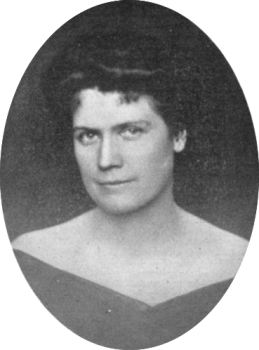
One hundred years ago this week, Grace Kingsley chatted with D.W. Griffith about his plans for his next film, which was to be “another huge war drama”:
The new picture will present an entirely different angle, however, from that of Hearts of the World. For instance, it is not intended to have in it a single battle scene—it will merely use the world war as its background—and quite likely it will have a psychological aspect. But the fans need feel no fear at this announcement, since its outstanding feature will be a poignant love story.
As near as now known many of its scenes will be laid in France. But Mr. Griffith has three distinct stories under consideration for the first of his Artcraft releases following Hearts of the World, so that his next may be a blending of three plots. In fact, he is now rehearsing three plays at one and the same time, in an endeavor to pick out the most available material in each plot.
The settings for the three plays vary widely, with one opening in Canada, another in Hawaii, and the third with either England or Scotland as the background. George Seigmann, Griffith’s assistant, is having his troubles trying to provide the settings for the three different locations. He says he is only hoping that Griffith doesn’t finally decide on still another story with the location in Iceland!
Mr. Griffith said yesterday that perhaps before he gets through with the rehearsals he may take the meat of the three different plays and weave an entirely different fabric.*
It sounds like he was workshopping his script, the way modern directors like Mike Leigh do. The now-lost film was eventually called The Great Love. Nothing set in Hawaii was in it, but the love story and the lack of battle scenes remained. According to reviews it was about an American (Robert Harron) so eager to fight in the war that he enlisted in the Canadian army and was sent to England. There he fell in love with a nurse (Lillian Gish), but her father wanted her to marry another (Henry Walthall), who was secretly a German collaborator. The collaborator conveniently shot himself after he failed to lead bombers to a munitions factory, and the lovers were reunited. Kingsley knew that any early description might not resemble the finished film; she pointed out “trying to prognosticate what a new Griffith picture will be like, or when it will come, is like trying to date up an earthquake!”
Audiences only had to wait four months. The Great Love premiered in Los Angeles on August 12th, and L.A. Times reviewer Antony Anderson thought it wasn’t quite as good as Hearts, but it was still Griffith and “when Griffith directs a photoplay his hand gives the touch of magic that forever sets the play as something apart and different from other picture plays.”

Kingsley reported that waiters were taking the new rules about alcohol very seriously. Marc Klaw, New York theater impresario was vacationing in town, and he complained to her:
“They not only want to tell you out here not only what to drink but when to drink it,” said Mr. Klaw, “and last night at 9 o’clock, in one of the local cafes, a large, strong waiter came and took my glass of wine away from me. When you stop telling people out here what to do and what not to do, and commence buying Liberty Bonds, I’ll believe your reformers are on the square.”
He was wrong about the Liberty Bonds: Westerners were buying lots of them. William S. Hart had just returned from a very successful two-week, nineteen city bond selling tour. He sold about 2 million dollars worth of them, and “Hart was fairly mobbed by his admirers, buttons being torn from his clothing and his red bandana handkerchief shredded to ribbons to be kept by the crowd as souvenirs.” But two ladies did their part to keep him humble. According to Kingsley:
He is the owner of a might fine bulldog, which insisted on going along. “I let him sit on my lap,” said Bill. “He is one of those big clumsy fellows about my size with a face that looks like the north end of a freight train going south. When we were crossing the street the traffic was blocked. There were two women standing near the car and one of the remarked ‘My, look at the face of that ugly brute.’ The dog’s face was only about six inches from mine, and to make it worse the other woman said ‘Which one?’”
William S. Hart and a bulldog from 1920 (not his bulldog). I can see a resemblance!
Hart also told her that Liberty Loan drives were very hard work. He said that after his tour, “any time I’m wanted to go to war, I’m ready.”
*Woven meat fabric? I think her metaphors got away from her.


























